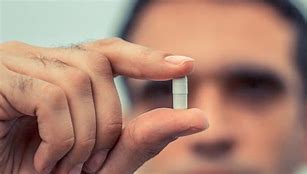What is Testosterone Replacement Therapy?
Testosterone Replacement Therapy (TRT) is a medical treatment aimed at restoring testosterone levels in men who have low levels of this hormone. Testosterone plays an important role in various bodily functions such as regulating muscle mass, bone density, red blood cell production, and sexual function. An estimated 1% to 3% of the United States men’s population is currently being treated with TRT. As many as 10% of all males over the age of 40 have low testosterone levels. The Global Testosterone market in 2024 is expected to surpass 2 billion Dollars (reaching 3 billion by the year 2033).
Understanding Testosterone and Its Importance
Testosterone is the primary male sex hormone, although it is also present in smaller amounts in women. It influences physical appearance, sexual development, and overall well-being. Testosterone levels naturally decline with age, but some men experience a more significant drop, leading to symptoms that can affect their quality of life.
Causes of Low Testosterone
Several factors can contribute to low testosterone levels, including:
- Aging: Testosterone levels typically peak during adolescence and early adulthood, then gradually decline with age.
- Medical Conditions: Conditions such as obesity, diabetes, and metabolic syndrome can impact testosterone production.
- Injuries or Infections: Damage to the testicles or infections can impair testosterone production.
- Chronic Illnesses: Diseases like HIV/AIDS, kidney disease, and liver disease can affect hormone levels.
- Medications: Certain medications, including opioids and steroids, can lower testosterone levels.
Symptoms of Low Testosterone
Men with low testosterone may experience a variety of symptoms, including:
- Reduced sex drive
- Erectile dysfunction
- Fatigue and decreased energy levels
- Loss of muscle mass and strength
- Increased body fat
- Mood changes, such as depression or irritability
- Decreased bone density, leading to osteoporosis
What is Testosterone Replacement Therapy?
Testosterone Replacement Therapy involves supplementing the body with synthetic testosterone to restore normal levels. TRT can be administered in several forms, including:
- Injections: Testosterone can be injected directly into the muscles, typically every 1-2 weeks.
- Gels: Topical gels are applied daily to the skin, allowing testosterone to be absorbed through the skin.
- Patches: Transdermal patches are worn on the skin and replaced daily.
- Pellets: Small pellets are implanted under the skin, releasing testosterone over several months.
- Oral Medications: Although less common, oral testosterone is available but may have more side effects.
Patient preference and co-medication is the typical determiner of the method of administration.
Benefits of Testosterone Replacement Therapy
TRT can offer several benefits for men with low testosterone, including:
- Improved Sexual Function: TRT can enhance libido and improve erectile function.
- Increased Muscle Mass and Strength: Testosterone helps build and maintain muscle mass.
- Better Mood and Energy Levels: Many men report improved mood, energy, and overall well-being.
- Enhanced Bone Density: TRT can help prevent bone loss and reduce the risk of osteoporosis.
- Improved Cognitive Function: Some studies suggest that TRT may improve memory and cognitive abilities.
Conclusion
Testosterone Replacement Therapy can be a valuable treatment for men with low testosterone, offering numerous benefits for physical and mental health. However, it is essential to weigh the potential risks and side effects and to undergo thorough medical evaluation and monitoring. By working closely with a healthcare provider, men can make informed decisions about whether TRT is the right choice for them.



